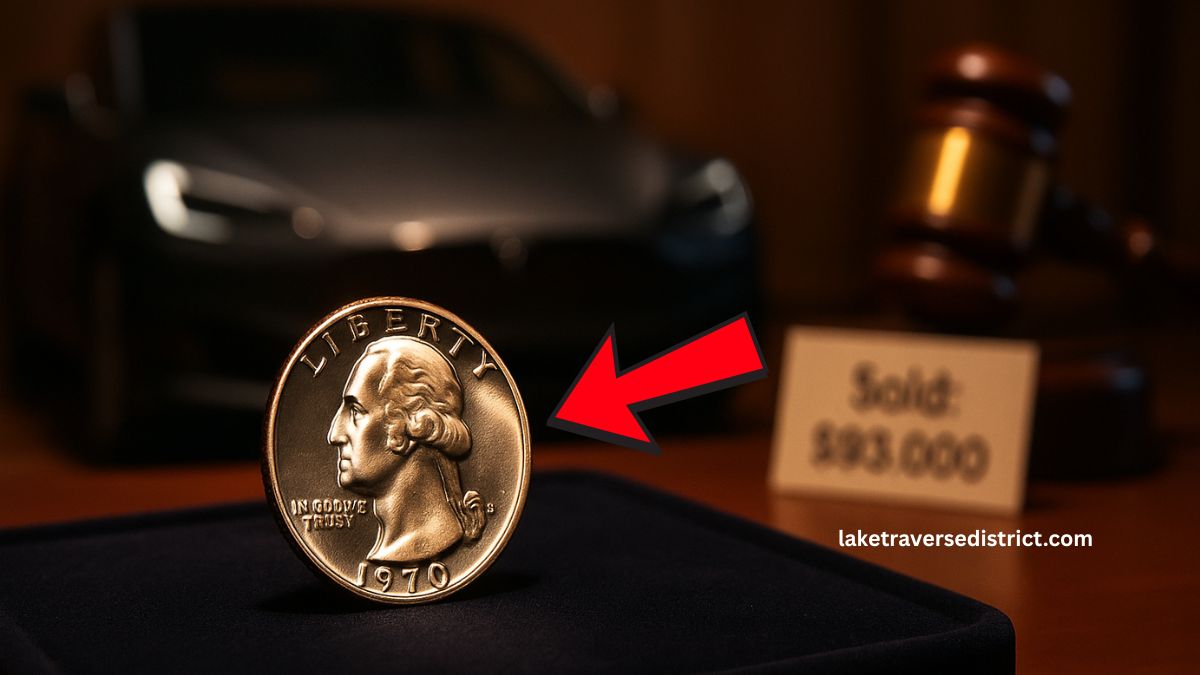In an astonishing twist for coin collectors and enthusiasts, a rare 1970-S Washington quarter has sold for a jaw-dropping $93,000, a price higher than many brand-new Tesla vehicles.
This unexpected auction result has sparked curiosity and excitement in the numismatic community, as this quarter wasn’t just rare — it came with a minting error so unusual that it transformed the coin into a true treasure.
Let’s explore the facts, features, and the reason behind this quarter’s monumental value.
What Makes the 1970-S Quarter So Special?
Unlike typical coins, this 1970-S quarter wasn’t just a regular strike. It was mistakenly overstruck on an older coin, giving it a dual identity. The coin displays elements of both the 1970 quarter and the original coin it was struck upon, creating a once-in-a-lifetime collectible.
This type of mint error is extremely rare. In this specific case, the coin was struck over a foreign silver coin, and traces of the original coin — including partial lettering and dates — can still be seen underneath the U.S. design. These unique features significantly increase its value among collectors.
1970-S Quarter Details and Value Breakdown
Here’s a breakdown of this extraordinary coin and other notable 1970-S errors:
| Coin Type | Details | Value Estimate |
|---|---|---|
| 1970-S Quarter (Main Feature) | Overstruck on older silver coin, visible underlayers | $93,000 |
| 1970-S on 1941 Canadian Quarter | Overstrike shows “1941” from Canadian coin | $35,000+ |
| 1970-S Double Die Obverse | Doubling of letters/numbers on front | $1,000 – $3,000 |
| 1970-S Off-Center Strike | Coin struck off-center, partial design missing | $100 – $500 |
Why Do Error Coins Sell for So Much?
The numismatic world places tremendous value on rarity, condition, and uniqueness. The 1970-S quarter meets all three conditions:
- Rarity: Coins with such drastic minting errors are almost never found in circulation.
- Condition: The coin was in near-perfect condition, adding thousands to its market value.
- Uniqueness: Being struck on another coin entirely is a standout error that almost never happens.
Some collectors are willing to pay high prices for coins that tell a story — especially when those stories involve historical mistakes at the U.S. Mint.
How to Know If You Have a Valuable Error Coin
Many people unknowingly hold onto coins that could be worth thousands. Here’s what to look for:
- Overlaying Designs: Two sets of letters, numbers, or images on one side of the coin.
- Visible Foreign Lettering: If a U.S. coin shows parts of a different country’s language or design.
- Off-Center Strike: Part of the coin is blank or incomplete.
- Doubling: Letters or numbers appear to be stamped twice.
If you find anything unusual, the best step is to have your coin professionally graded and authenticated.
Public Reaction to the $93,000 Sale
The news of the 1970-S quarter fetching a six-figure price caused a stir in the coin community. Forums lit up with speculation, and collectors began rechecking their coin collections.
The fact that a coin this valuable could have been sitting in someone’s drawer or change jar highlights how everyday items can turn into extraordinary finds.
This sale also reinforces the importance of education and awareness in collecting. Knowing what to look for can turn a simple hobby into a potentially lucrative pursuit.
The story of the 1970-S quarter selling for over $93,000 is a stunning reminder that rare treasures can still be found in everyday places. This isn’t just a coin — it’s a piece of numismatic history that sparked a bidding frenzy and cemented its place in collector lore.
If you have old coins at home, now might be the perfect time to take a closer look. Who knows — your next grocery quarter could be worth more than a luxury car.
FAQs
How rare is the 1970-S quarter with a mint error?
It’s extremely rare. Only a few have been discovered, and the overstruck varieties are almost impossible to find in circulation.
Can I still find a valuable 1970-S quarter today?
Yes, though rare, such coins may still be in old coin collections, estate sales, or forgotten boxes. Always inspect quarters from 1970 carefully.
Where can I get a coin professionally graded?
You can contact major grading services like NGC or PCGS for authentication and grading. They can determine your coin’s condition and value.

